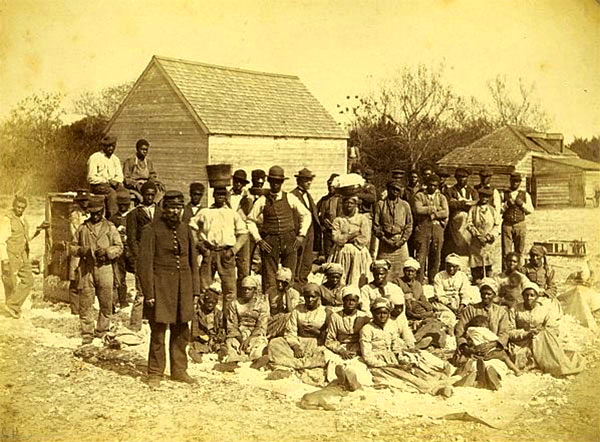
History of the Gullah Culture
If you’ve ever been to the Southeastern part of the United States, chances are you’ve heard of the Gullah Geechee culture. Or, if you grew up in the early ’90s, you may have enjoyed afternoons watching the Nickelodeon hit television show Gullah Gullah Island which celebrated the life of a family living off of the coast of South Carolina. Wherever you’ve heard about the Gullah culture doesn’t matter; what matters is the importance of this group not only to themselves but also to the history of South Carolina and Georgia. They are, after all, one of the oldest cultural groups still thriving as a “nation within a nation” today.
Where it Began
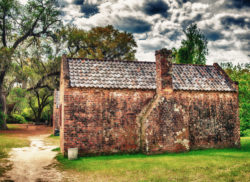
The Gullah/Geehcee people still inhabit coastal areas from North Carolina to Florida.
Nearly 500,000 Gullah/Geechee people inhabit a 500 mile stretch between Jacksonville, North Carolina, and Jacksonville, Florida today. A large number of these Gullah people live in rural areas on the Sea Islands which are located off the coast of South Carolina and Georgia. But where did these people come from?
The Gullah/Geechee people are descendants of African slaves that were brought to Charleston in the late 1500s. When the slaves that were brought to the Carolina Colony were captured, they were placed in prison cells along the West African coastline. In these prisons, the slaves were introduced to Africans from different tribes and regions. Ultimately, this was the beginning of the Gullah people; the intermingling of the variety of African backgrounds as well as the different dialects are spoken created a new space for the slaves to come together and uphold their African culture as best as they could within the circumstances.
When the African slaves reached the Carolina Colony, they easily acclimated to their new surroundings. The climate of the Carolina Colony was not only easy for the slaves to get used to, but it was also great for rice cultivation. However, the vast amount of slaves brought to American from Africa brought something other than their bodies: they brought diseases. And thanks to the warm, humid climate of South Carolina and Georgia, diseases such as malaria and yellow fever thrived among the plantations. Most of the African slaves were quite tolerant to these diseases, but their white masters were not. This resulted in the slave-holders moving away from their plantations, and, in turn, some slaves have bestowed titles such as “foreman” while their masters stayed away from the rice fields.
The slaves continued to do their jobs on the plantations and the slave-holders made more and more money. The hype surrounding the rice plantation industry kept growing, and white plantation owners continued to purchase slaves for labor. By the early 1700s, the population of white people was overwhelmed by the black slave population.
Despite the number of slaves in the South at this time, not all of them lived the same. In fact, the Gullah people developed their culture not only from their distinct African roots but also because they had little-to-no contact with white people. During the time of mass-importation of slaves to the Carolina Colony in the 1700s, the Gullah people were beginning to develop their unique culture. Because of the large number of West African slaves and because of their isolation from white culture, the Gullah people started developing their own language, traditions, rituals, cuisine, music, and more, all derived from their African roots.
Even after the emancipation of slaves occurred, the Gullah community stayed isolated and stuck around the same areas in the coastal regions of South Carolina and Georgia. Many Gullah people continued to work as paid plantation workers, but eventually, the plantation markets collapsed and left the Gullah people in a place that had no more significance economically. Since World War II, the American lifestyle has been steadily infiltrating the Gullah community and, nowadays, many Gullah people leave their communities to find work, go to school, or experience a different lifestyle. Whether they stay within their communities or leave, they never forget one thing: their unique heritage.
Gullah Langwidge
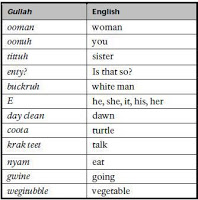
The Gullah language is considered an English-based creole language. Photo Source: Pinterest.com
For a second, you probably thought that the word “language” was misspelled there. However, that is the Gullah pronunciation. The Gullah language is strangely beautiful and is truly complicated when it comes down to explaining how it came into existence. It is no secret that this language stems from African roots. In fact, many Gullah words can be traced to specific African groups and tribes. For example, the use of only two pronouns (‘e which means he, she, and it and onna which stands for you, us, and them) as well as the absence of the verb “to be” and the absence of t sounds on the ends of words derive from African linguistics.
So let’s get technical now. The Gullah language is what linguistic scholars call an English-based creole language. Sounds crazy, right? Basically, creole languages come about when people from different backgrounds come together in situations such as slavery, and a form of communication is needed in order for these diverse groups to speak with one another. It makes sense that the many African dialects have influenced the formation of the Gullah language, but where does English come in?
Let’s break this down.
English is the target language of Gullah, which means that it was the language of the people in power. Therefore, because the plantation owners were dominant in power over the black slaves, English became the main thread of Gullah speech.
The African substrate languages have influenced the grammar, sentence structure, pronunciation, and some vocabulary of the Gullah language.
Basically, then, Gullah is a complicated mash-up between English and African languages from the slaves’ homeland.
Though there is a lot more information to fully understand the development and history behind the Gullah language, this is not technically a linguistics lesson, and the details can be quite confusing and interesting. If you have some free time, take a moment and check out more information about the Gullah language. You will not be bored!
Gullah Arts, Customs, and Traditions
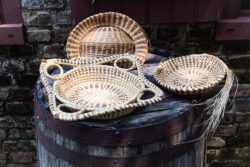
The “Ring Shout” was one of the Gullah religious ceremonies that stemmed from African tradition.
Though it is difficult to pin most of the Gullah traditions and customs to specific tribes in Africa, it is agreed that many of them came from places such as the Rice Coast, West Africa, and Western Sudan. Some Gullah traditions also came from the white slave owners. The Gullah people took these traditions and made them their own by adding African twists to them.
Such traditions include the “ring shout” ceremony. While the Gullah people were converted to Christianity by their masters, they kept true to their celebratory African style. Participants of the ring shout ceremony were possessed by the Holy Spirit while they chanted, danced in a circle, and pounded sticks together. Traditions like this no longer exist among the Gullah people, but it shows, like their language, how the culture of their new land, as well as their roots, meshed together in order to create something new and suitable for their lives in a new land.
There are many Gullah traditions, customs, and beliefs that are still being practiced today. For instance, the Gullah believe in witchcraft and paint their doors “haint blue” in order to ward off evil spirits and witches. There are people in the Gullah community that are thought to have the power to protect people from evil. If the Gullah believe that their houses are haunted by evil spirits, or are worried that a spirit will soon try to inhabit their dwelling, they will paste newspaper on their walls in order to distract the spirits from doing any harm.
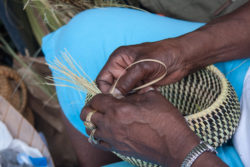
Sweetgrass basket weaving is a long-time tradition of the Gullah/Geechee people.
When it comes to arts and crafts, the Gullah people are well-known for their sweetgrass baskets. Many Gullah people can be seen at festivals or even set up on the side of highways selling their beautiful creations. For the most part, women are known to craft these baskets, but historically, during the plantation days, the men would make the baskets. In those days, men who were too old or in bad healthy used to weave large utilitarian baskets for the plantation work. After emancipation, though, women took to making smaller baskets for things such as holding food or for decoration. If you are ever traveling in South Carolina or Georgia, make sure to stop by and check out the gorgeous quality of these baskets and ask about the hard work that goes into crafting them. You will be very impressed.
Other art includes Gullah paintings which tend to be very bright and portray images of the Gullah people and community. Gullah men traditionally take on the hobby of woodcarving, and Gullah women tend to partake in quilt making similar to that found in Africa.
Gullah Food
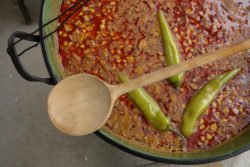
The Ultimate Gullah Cookbook features over 100 recipes of Gullah cuisine.
Long before the rice plantation days, the slaves that came from Africa were used to a diet that heavily consisted of rice. It is no surprise, then, between their African food culture and working on rice plantations, that the Gullah diet is comprised of a lot of rice dishes. And because their communities lie in the coastal regions of South Carolina, Georgia, and as far down as Florida, it makes sense that the Gullah people love seafood, too!
It is also said that, to this day, Gullah cuisine is influenced by the rations that slaves would receive on a weekly basis. These rations included:
•10 quarts Rice or peas
•One-Bushel Sweet Potatoes
•2-3 Mullet or Mackerel- Salt Fish (in the winter)
• 1-pint Molasses
•2 pounds Pork
•Bacon and Beef (in the summer)
•1 peck of Meal
•1 peck Grits
The Gullah people took what was available and turned it into delicious, simple dishes that are still enjoyed today. But don’t be fooled; while the dishes tend to be more on the simplistic side, the way in which the Gullah people get their food is not so simple. In fact, the Gullah diet is based on the resources available from the water and land that surrounds them. It is said that the Gullah people formed their cultural cuisine from African roots, making do with what they have, creativity, and adaptability.
Conclusion
The Gullah culture is very rich and interesting; there is no doubt about that. Right now as I am typing this, the Gullah culture exists as a living, breathing community not-too-far from where I am sitting. The fact that the basis of this culture was built off of African roots and developed through the adversity of slavery is haunting yet worthy of celebration, as this resilient group of people worked through and overcame hardship as is evident with their existence today.
While this article touches on many main aspects of the Gullah culture, it is suggested to do further reading in order to fully grasp the uniqueness of this community.
Sources: Yale.edu; Gullah.tv; UltimateGullah.com
